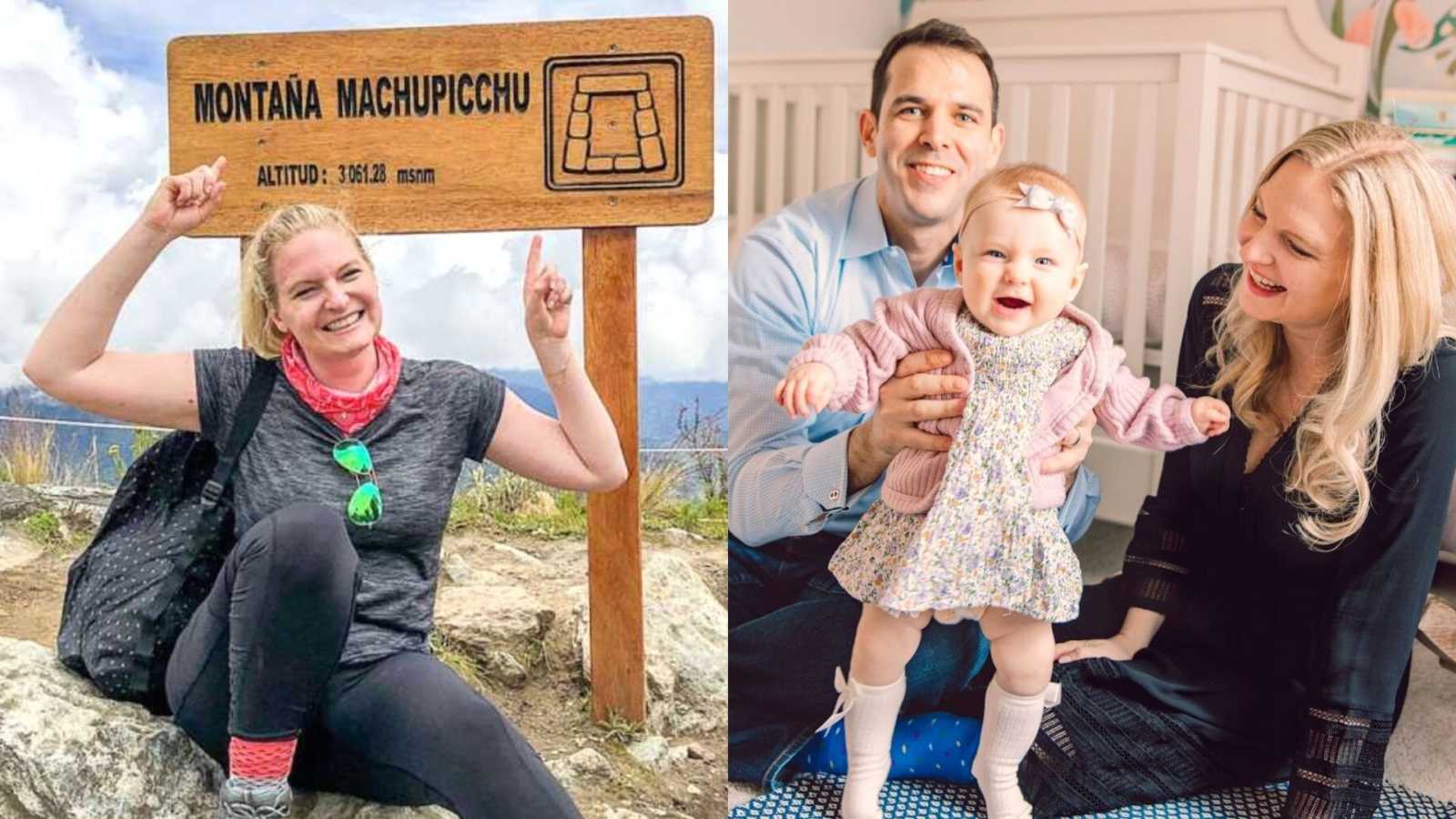“‘It’s up to the universe. We’re supposed to go there. I don’t know why, but we’ll figure it out when we get there.’ I was standing at a bus station in Byron Bay, Australia when I overheard a stranger saying this. At the time, it summed up my situation very well. After devoting 15 months of my life to an IVF cycle that failed, I needed to take a step back. I was heartbroken, exhausted, and disappointed. The way the past 2 years of my life unfolded felt like a Band-Aid being slowly pulled off. The only thing I had to show in exchange for all of my effort to get pregnant was a stack of medical bills and the ten extra pounds the medications added to my body.
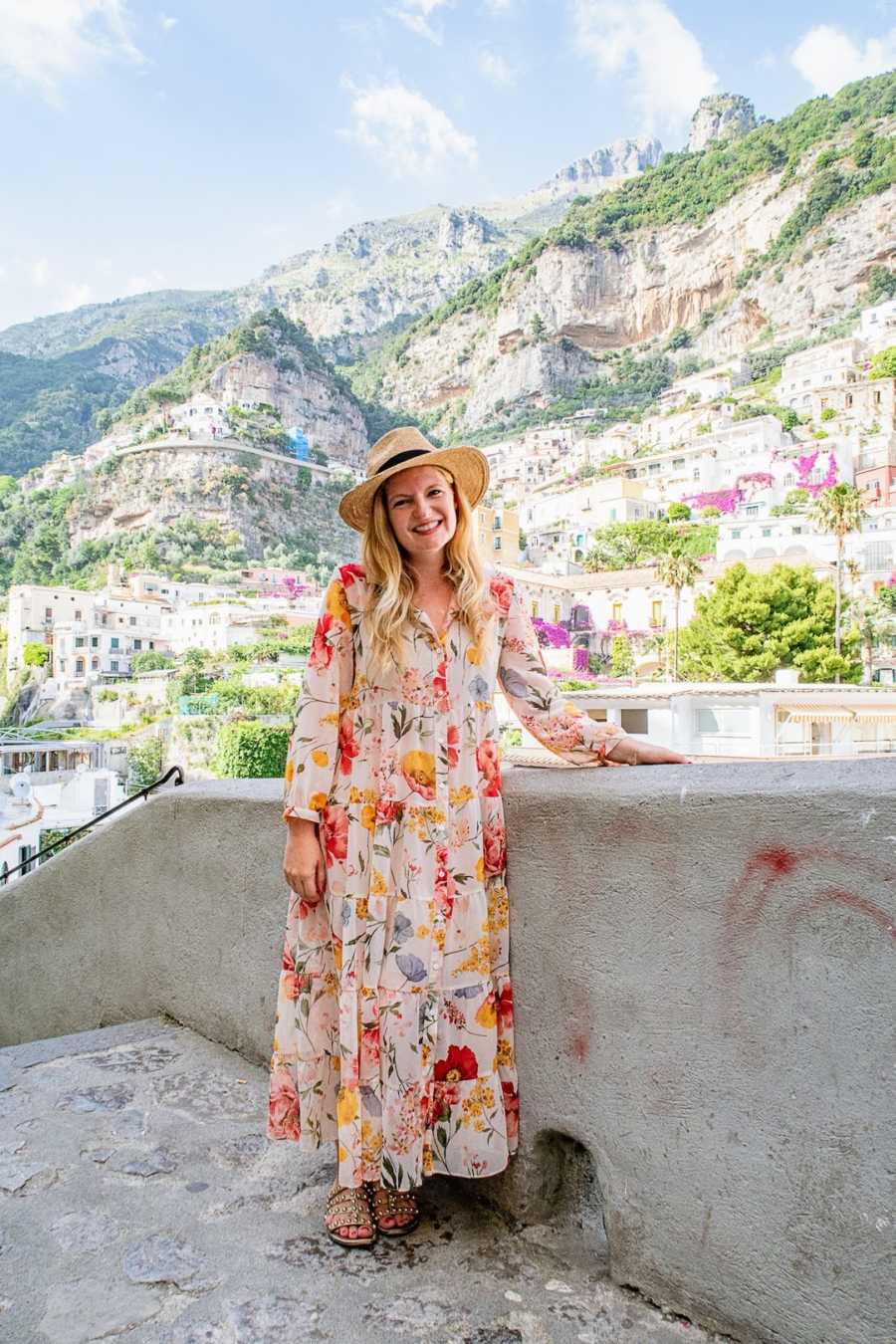
My husband and I still had one embryo on ice in Chicago, but I wasn’t ready yet. I needed time to heal. Time to get back to feeling like myself. I had spent the past 3 years working full time as a food and travel blogger, and I always felt the most alive when I was traveling. With my husband’s blessing, I decided to take advantage of the fact I can work from anywhere and I booked a 101-day solo trip around the world so I could give myself the time and space I needed to heal before we gave IVF another try.
I gave myself permission to make my own happiness my top priority. I spent a few weeks writing out my dream travel destinations, researching logistics, getting various vaccines, and booking flights and hotels. The final plan was ambitious. I would travel to ten countries on five continents. I would mix wild adventures none of my friends and family would ever agree to with rich cultural experiences. Challenges I wanted to accomplish were sprinkled throughout the trip because after focusing so hard on IVF for it to end in failure, I need to gain confidence by achieving some goals.
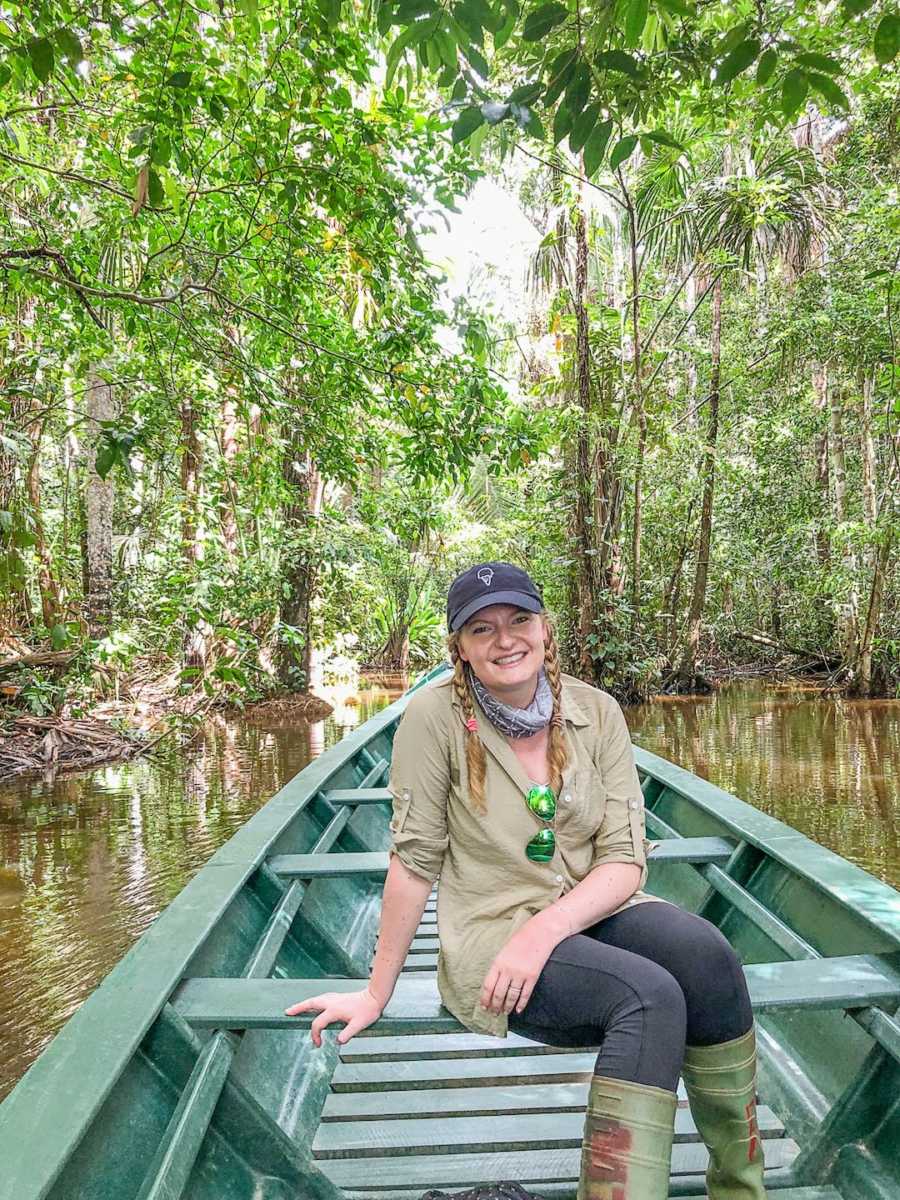
I landed in Peru on April 12, 2019, and I took on my first major challenge that week: climbing Machu Picchu Mountain, a steep mountain overlooking the 15th-century Inca citadel. There were times when I felt like my legs would collapse and moments when I was doubled over trying to catch my breath. I questioned if I could make it to the top. But when I did, and I stood above the thin white clouds staring down at Machu Picchu below, I felt the joy of accomplishing something. I felt pride in myself. It was what I needed after years of being told my body wasn’t quite working the way it was supposed to.
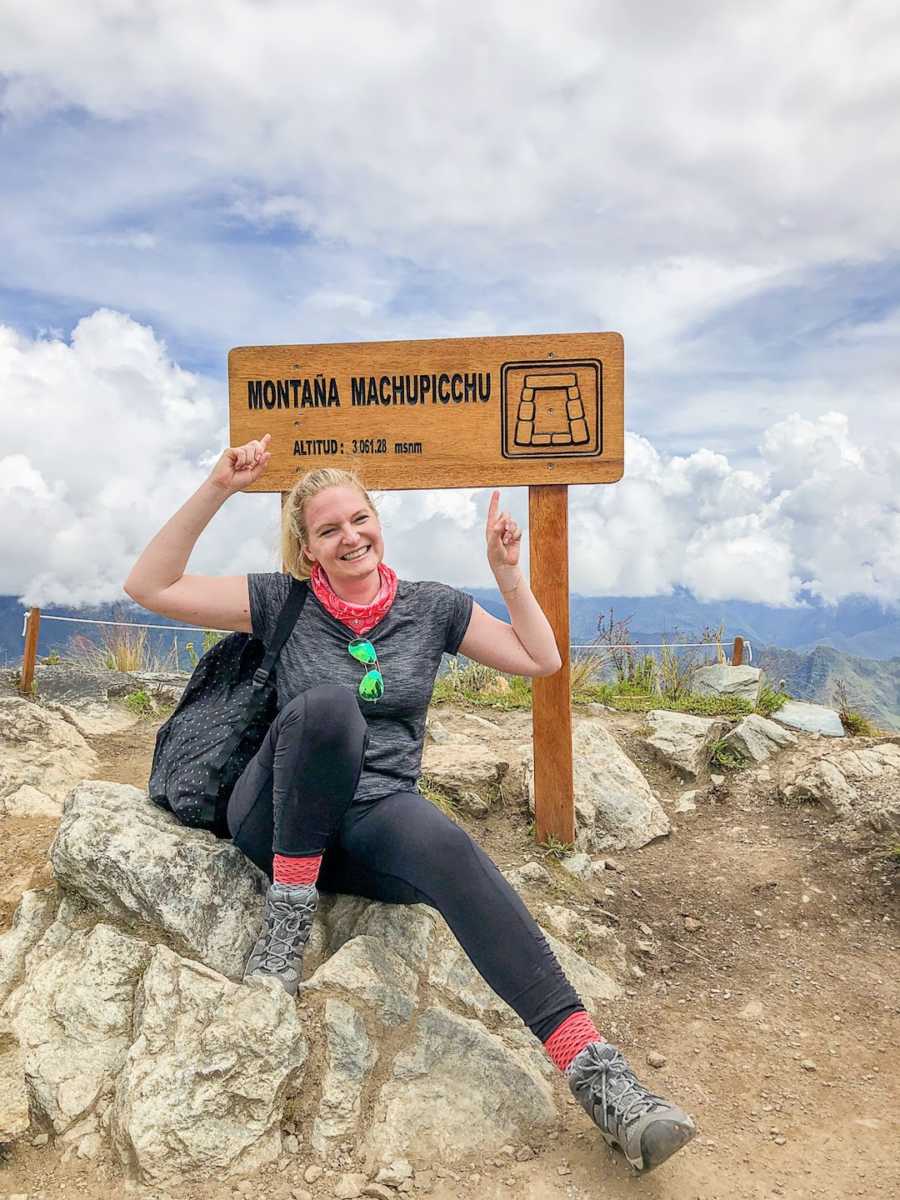
In the weeks and months following, I hiked through the Amazon rainforest during a thunderstorm, kayaked beside dolphins in Byron Bay, biked hundreds of miles through rice paddies in Vietnam, watched the sunrise over Angkor Wat, explored historic temples in Kathmandu, and sipped Aperol Spritzes on the Amalfi Coast. I became stronger both physically and mentally. At the end of June, it was time for most ambitious part of the trip: climbing Mount Kilimanjaro. I thought if I could do IVF, climbing a mountain couldn’t be too hard. At the same time, I told myself if I was strong enough to make it to the top of Africa’s tallest peak, I was strong enough to take on another round of IVF.
It took 3 and a half days of hiking to reach the top of the mountain. One morning, I woke up to see a thick blanket of clouds below the camp. The clouds stretched all the way to the horizon, reminding me of the way the sea kisses the shore and disappears behind the horizon line. I saw trees that only grow on Kilimanjaro. I met fellow hikers and we cheered each other on as we rode a rollercoaster of emotions and we worked toward the goal of making it to the summit. I was in awe of the beauty of the nature around me and encouraged by the determination of others hiking beside me.
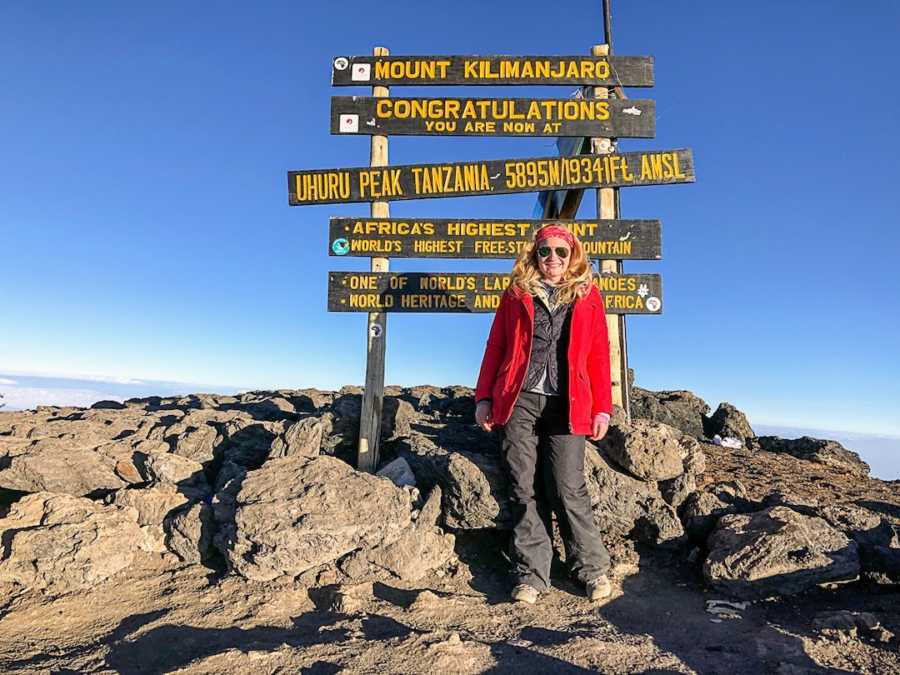
The hike began at midnight on the day we hiked to the top of the peak. The only light came from the stars and a line of headlamps zigzagging up to the mountain like twinkle lights. ‘Don’t look up,’ was the advice my guide Jonas gave me. Apparently, hikers see all the lights and get discouraged at how far they are from the top. The air got thinner and my legs felt heavier as I blocked out everything around me and just solely focused on putting one foot in front of the other. I couldn’t quit just because it was hard. The sun was up and my skin had stopped stinging from the cold by the time I saw the wooden sign marking Uhuru Peak, the tallest point on the mountain. I made it.
On the hike back to camp, I ran into a gray-haired woman named Mary Anne I had met 2 days earlier. She congratulated me for reaching the summit and I held back tears as she hugged me. The fact I did it finally sunk in. I was proud of myself for doing something I wasn’t sure I could do. I was excited for Mary Anne to make it to the top herself so she could bask in this feeling. It hit me: the hardest things in life are the most rewarding. I had felt the universe calling me to take this trip, but I wasn’t sure why. The man at the bus station was right, I figured it out once I got there. I did it to gain new perspective on life and happiness. To regain the mental and physical strength I had lost.
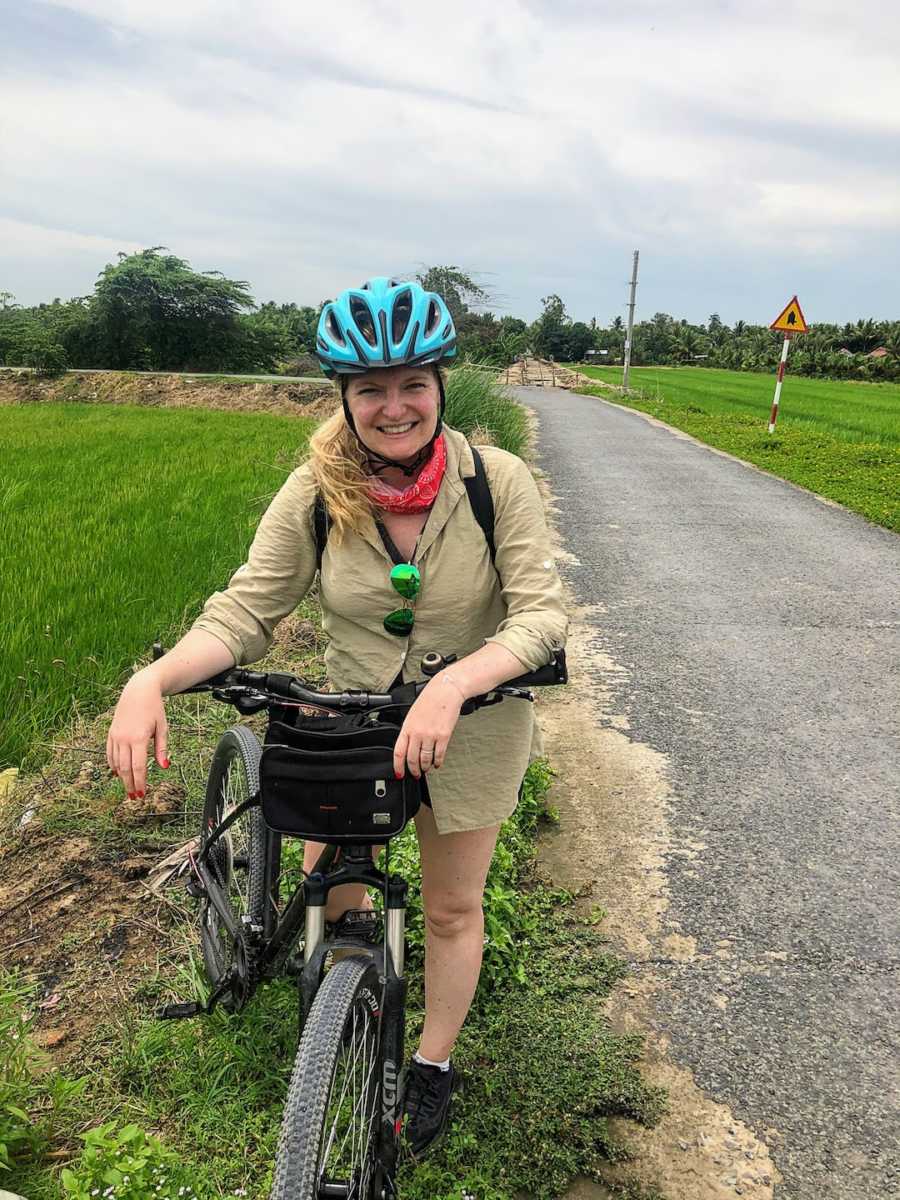
When I returned home to Chicago, I understood my life was about to go one of two ways: I would either become a mother, or I wouldn’t. Unlike before, I knew I was going to be okay either way. I had learned to create my own joy and I didn’t need anything to make my life more complete. We met with our doctor and together we decided to pair an egg retrieval with a transfer of the frozen genetically tested embryo remaining from our previous IVF cycle. Our hope was we would gain an additional viable embryo so we could potentially have two children.
When the egg retrieval failed, we still proceeded with the embryo transfer. It was our last shot at growing our family. It was the week of my 36th birthday when I got the news: I was pregnant. I made it through the biggest hurdle on my way to motherhood, but plenty of unexpected challenges were heading my way. I sailed through the first few weeks of pregnancy. Once I made it to the eighth week of pregnancy, I ‘graduated’ from the fertility practice and I was placed in the care of my OBGYN. I told my family the good news when we visited for Thanksgiving, and something I had been suspecting turned out to be true: my sister was also pregnant.
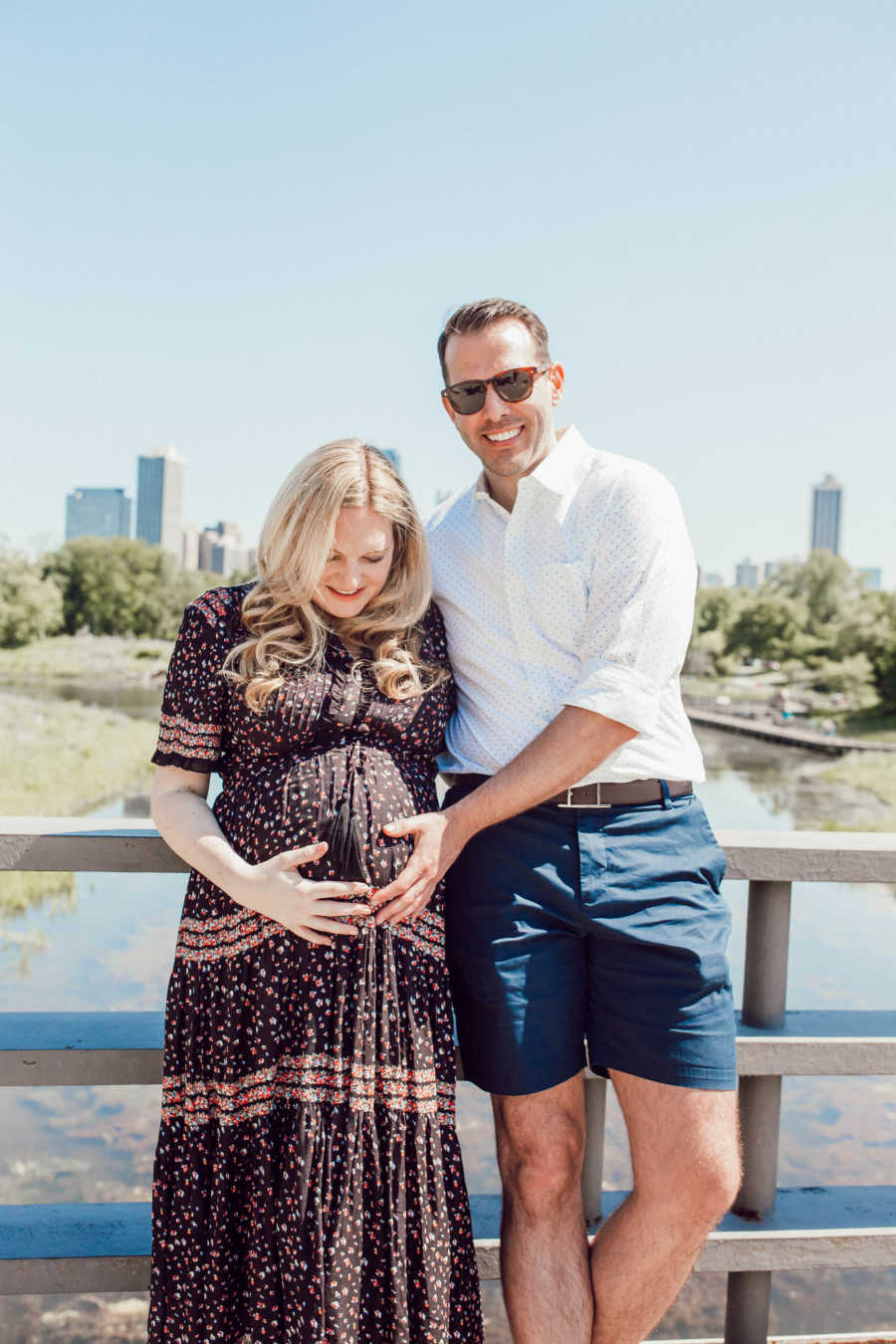
Our brother had a 4-month-old. Within 12 months, my siblings and I would all have our first children. Even though our child would be an only child, she would be growing up with cousins her own age. The following week, the morning sickness started. Friends warned it was often bad during the first trimester but I should start to feel better after the fourteenth week. Instead, things got worse. Days were spent on the couch struggling with nausea and fatigue. Around week 22, I became so sick I was unable to hold down any food or drink for 2 days and was sent to the hospital for an IV. There I was diagnosed with hyperemesis gravidarum and given a prescription medication to help me manage the nausea.
I started to feel like myself again. I was able to leave home and see friends without worrying about the nausea. I had felt so isolated and unable to control my life. I was relieved to start working again and excited to show friends my emerging baby bump. This joyous phase of pregnancy lasted for 3 weeks before COVID changed the world. Throughout my struggle with infertility, I imagined finally getting to have a baby shower. I looked forward to my family getting to meet my newborn baby. I hoped our friends would excitedly visit us at the hospital to congratulate us. I was thrilled to be planning a babymoon with my husband so we could properly celebrate the pregnancy and enjoy some alone time together.

I couldn’t wait to pay for the overpriced newborn photos at the hospital and to show them off to everyone. Over the next weeks and months, each of those dreams evaporated. I had worked so hard to get pregnant. I felt like I deserved to enjoy the experience. Instead, my mind was filled with worry and uncertainty. My husband wasn’t allowed to come to my doctor appointments anymore. All of the birth and parenting classes we signed up for were canceled. I tried to channel my energy into the things I could control: we sheltered in place, we socialized with friends over video chats, and we did everything we could to stay safe. Time passed slowly. Each passing week felt like an accomplishment.
And finally, on July 8, 2020, 6 days past my due date, I gave birth to a perfect 8 pound, 5 ounce baby girl. My husband and I fell completely in love with our daughter, Gwendolyn, the moment we saw her. Getting to the moment where I got to hold my baby had taken two IVF cycles over the course of 2 and a half years, about a dozen medications, over 50 doctor appointments, and hundreds shots. IVF had been one of the hardest times of my life but it was the most rewarding. I have learned to see the bright side to the challenges having a baby in 2020 threw at us. We both get to work from home. We don’t have to travel. Gwendolyn has spent every day of her life with both of her parents.
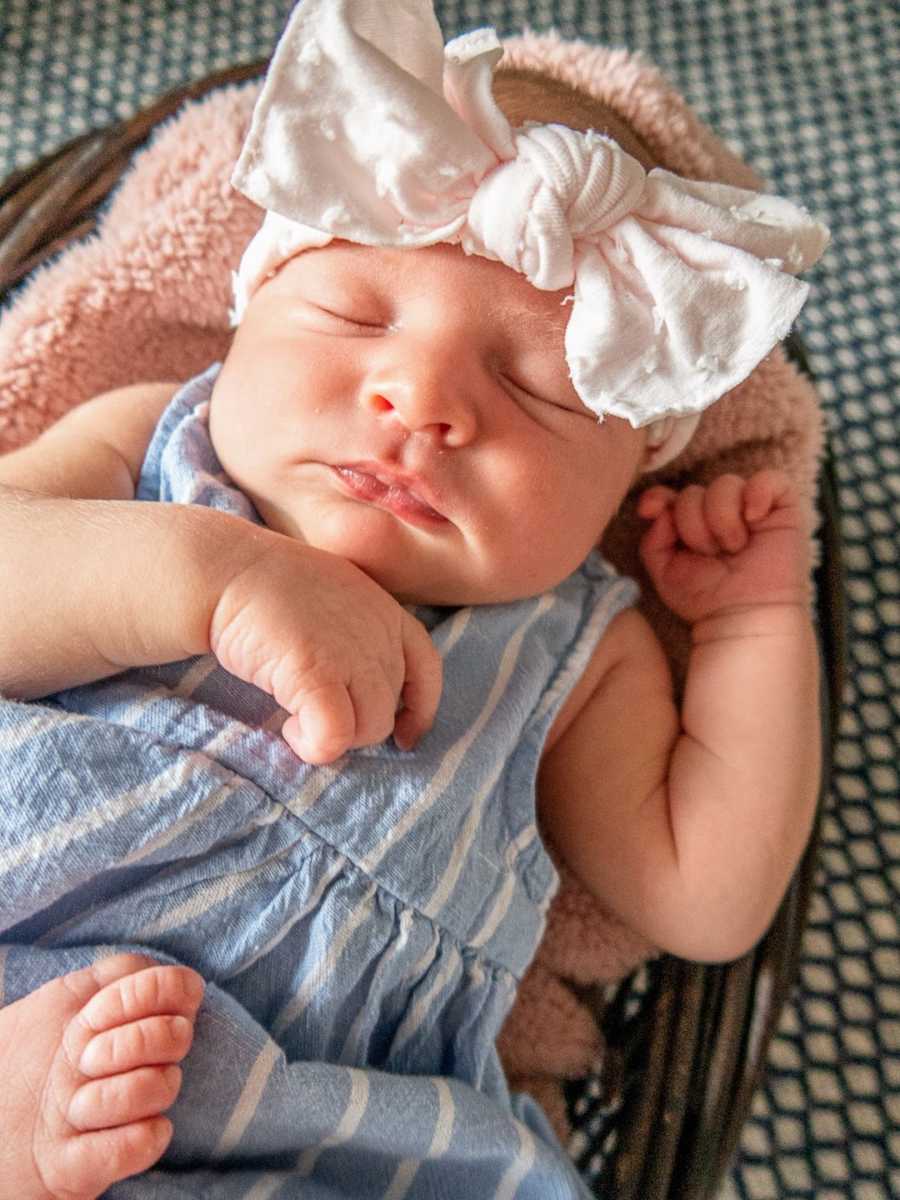
We have been able to see all of her milestone moments: the first time she rolled over, crawled, and stood up. I didn’t think my journey to becoming a mother would include a literal journey around the world, but it did. It made me stronger, more determined, and able to handle the challenges life threw my way. They say it takes a village to raise a child; I think I learned a similar lesson through my travels. Kind strangers, fellow travelers, and helpful guides showed me the way, gave me advice, and taught me about their culture. This village of people got me around the world and back home, while giving me the adventure of a lifetime.
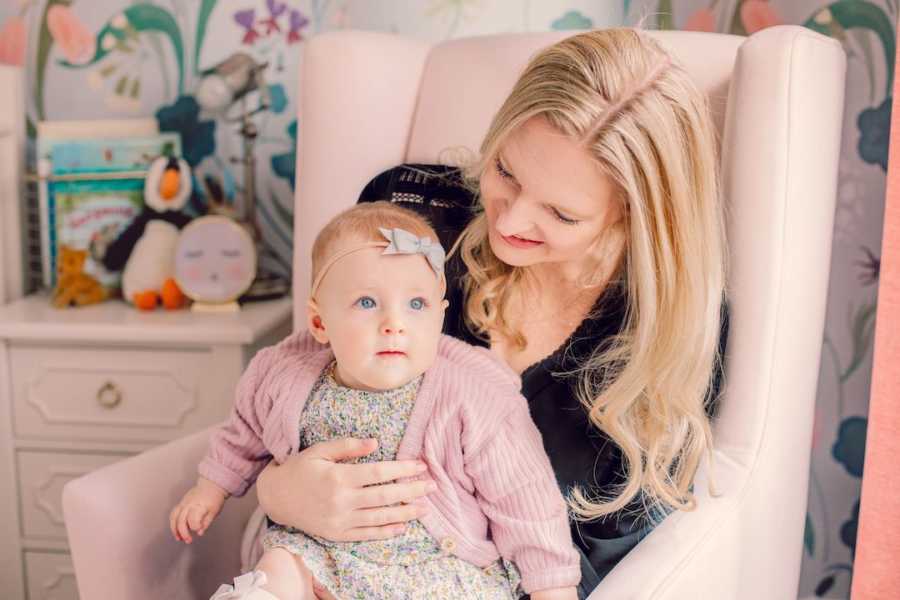
It took a large village to bring Gwen into the world. I am so incredibly thankful to the team of doctors and nurses who brought my daughter into the world. Now, I am trying to pay it forward to other mothers in the best way I can. I am lucky to have an oversupply of breastmilk, so I have been donating breastmilk to a milk bank that supplies NICUs in the Midwest. So far I have donated over 1,100 ounces of milk and I am thankful I am able to help others with their motherhood journey in such a meaningful way.”

This story was submitted to Love What Matters by Kit Graham of Chicago, Illinois. You can follow their journey on Instagram, Facebook, and their blog. Submit your own story here, and be sure to subscribe to our free email newsletter for our best stories, and YouTube for our best videos.
Read more stories like this:
Do you know someone struggling with infertility? Please SHARE this story on Facebook to help give them hope that miracles can and do happen.

